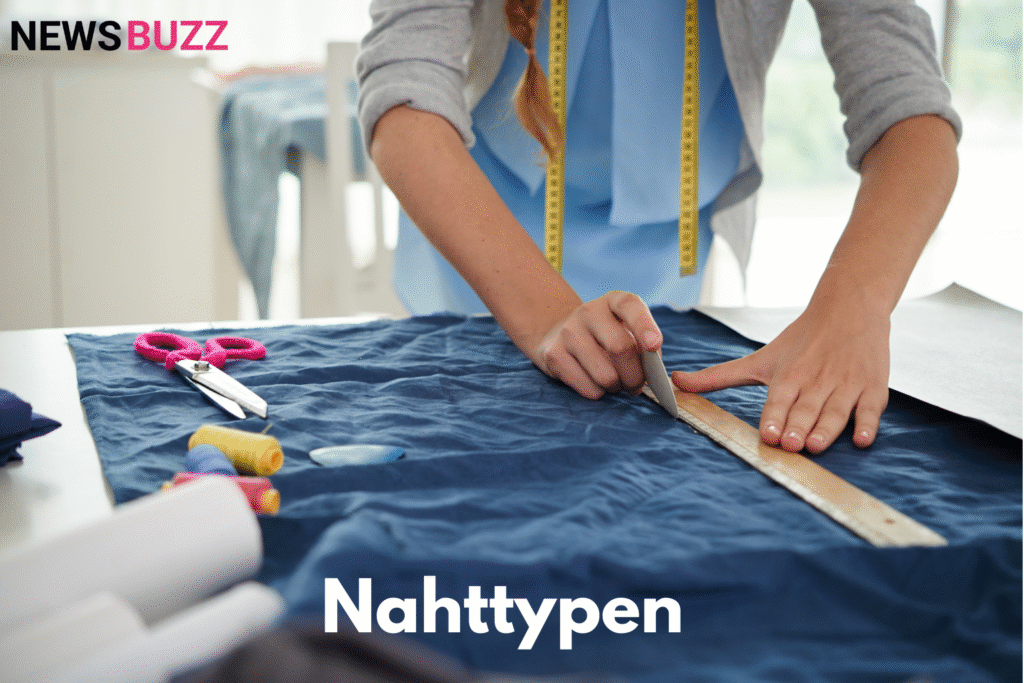Introduction
The word nahttypen comes from German and translates to “types of seams.” It refers to the various ways materials can be joined together – whether in sewing, surgery, or welding. Each seam type has its own purpose, from providing strength and flexibility to ensuring aesthetic quality. Understanding the main nahttypen is important for tailors, medical professionals, and engineers, as it helps them choose the right method for each application.
Nahttypen in Sewing and Tailoring
In the textile and fashion world, nahttypen determine both the look and durability of a garment. Choosing the right seam makes the difference between professional results and poorly finished clothing.
- Straight stitch seam: The most common type, used for everyday fabrics.
- Zigzag seam: Flexible and ideal for stretchable fabrics.
- Overlock seam: Trims fabric edges and prevents fraying.
- Flat-felled seam: Very strong, commonly used in jeans.
- French seam: Encloses raw edges, suitable for delicate fabrics like silk.
Tip: Always select the nahttyp according to the fabric – strong seams for heavy materials, delicate seams for lightweight fabrics.
Also Read: Asbestlint: Understanding the Risks of Hidden Asbestos Dust
Nahttypen in Surgery
In medicine, nahttypen refer to surgical stitches used to close wounds or incisions. The chosen method affects both healing and scar appearance.
- Simple interrupted suture: Each stitch is tied separately, reliable but slower.
- Continuous suture: One thread runs through multiple stitches, quicker but less flexible.
- Mattress suture (horizontal or vertical): Strong, used for wounds under tension.
- Subcuticular suture: Hidden under the skin, leaves minimal scars.
Surgeons carefully select the nahttyp depending on wound size, location, and cosmetic outcome.
Nahttypen in Welding and Engineering
In technical fields like metalwork, nahttypen describe welded joints. These seams must withstand mechanical stress and ensure structural safety.
- Butt weld seam: Joins two edges directly.
- Fillet weld seam: Connects parts at right angles.
- Lap weld seam: Overlapping materials are welded together.
- Circular weld seam: Used on pipes and cylindrical objects.
The correct nahttyp in welding depends on the type of load the structure must endure.
Step-by-Step: How to Choose the Right Nahttyp
- Check the material – Fabric, skin, or metal all require different seam methods.
- Consider strength needs – Heavy fabrics or metal need strong seams; delicate materials require gentle seams.
- Select the right tools – Sewing machines, surgical needles, or welding machines.
- Test and inspect – Always check the seam for strength, flexibility, and appearance.
Why the Right Nahttypen Matter
The choice of seam type affects:
- Durability: Longer lifespan of the product or wound closure.
- Functionality: Balance between stability and flexibility.
- Appearance: Clean and professional finish.
From fashion to surgery to engineering, the correct nahttyp ensures the best results.
Also Read: Sattelitter: The Technology Powering Modern Connectivity
Conclusion
The concept of nahttypen goes beyond sewing – it’s a universal principle in multiple fields. In clothing, it enhances durability and style. In surgery, it ensures proper healing. In welding, it guarantees strength and safety. By understanding and applying the right nahttypen, professionals across industries achieve high-quality results.
FAQs about Nahttypen
1. What does nahttypen mean?
It’s the German word for “types of seams,” used across sewing, surgery, and welding.
2. What are the most common nahttypen in sewing?
Straight stitch, zigzag, overlock, flat-felled, and French seams.
3. Which surgical nahttyp heals with less scarring?
The subcuticular suture, since it’s placed under the skin.
4. How are nahttypen used in welding?
They describe weld joints such as butt, fillet, lap, and circular seams.
5. Why is seam selection important?
Because the correct nahttyp affects strength, appearance, and overall functionality.



